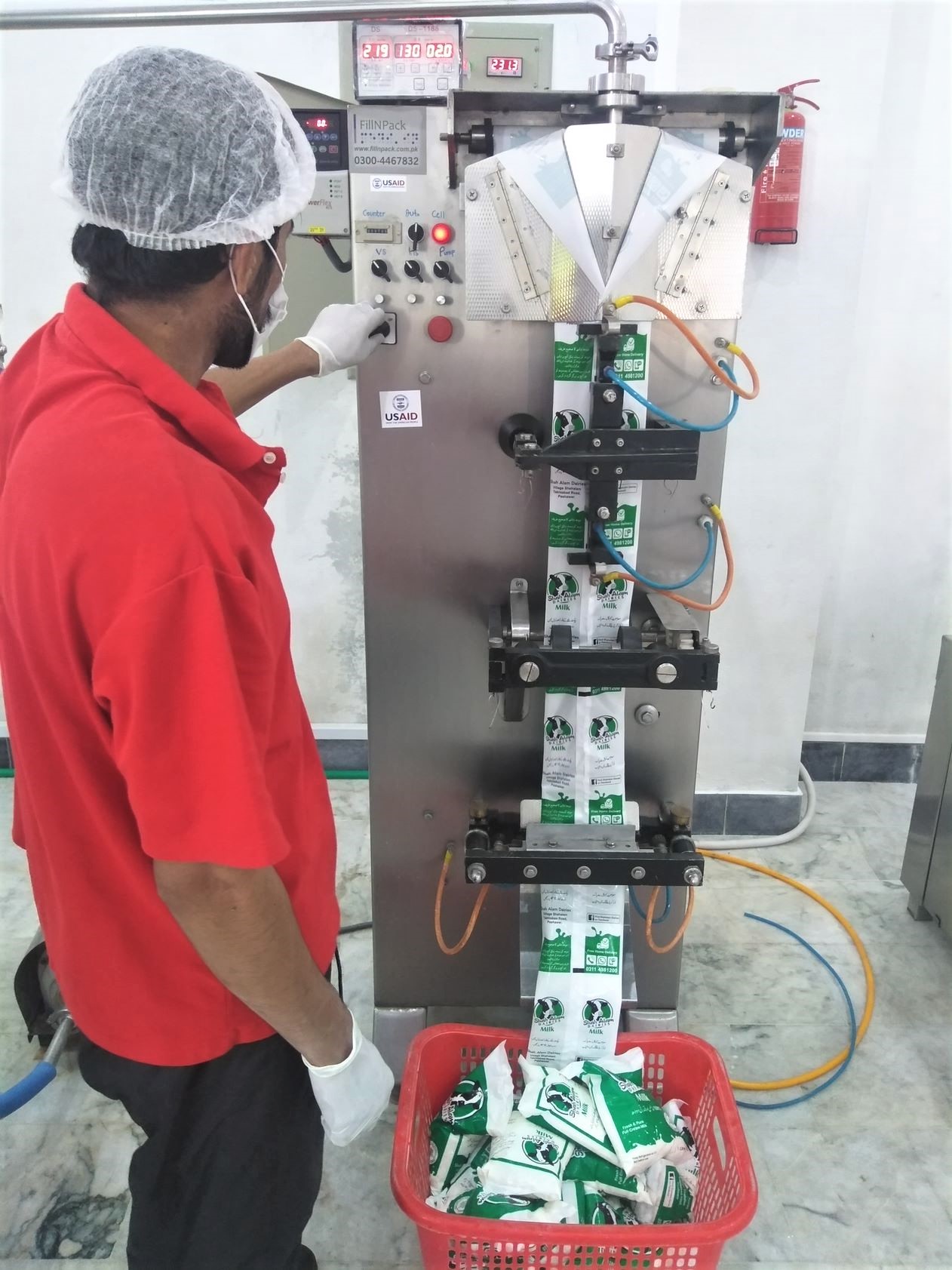|
Combination Weigher
A multihead weigher is a fast, accurate and reliable weighing machine, used in packing both food and non-food products. History The multihead weigher was invented and developed by Ishida in the 1970s and launched into the food industry across the world. Today this kind of machine, thanks to its high speed and accuracy, has achieved widespread adoption in the packaging industry and is produced worldwide by a number of manufacturers. Some manufacturers offer complete packaging lines, integrating the multihead weigher with other packaging machinery ranging from bagmakers (including Vertical Form Fill and Seal bagmakers) to traysealers and inspection systems. The latter include checkweighers and X-ray inspection systems. How multihead weighing works A ‘typical target’ weight per pack might be 100 gram The gram (originally gramme; SI unit symbol g) is a Physical unit, unit of mass in the International System of Units (SI) equal to one thousandth of a kilogram. Origin ... [...More Info...] [...Related Items...] OR: [Wikipedia] [Google] [Baidu] |
Ishida (company)
is a Japanese multinational company which manufactures food packing machinery. It has been in business since 1893 and is a privately owned family business. It invented the multihead weigher, for which it enjoys a global market share of 70%. The company also makes weighing, packing and inspection equipment and packing line systems for food and non-food industries. History Ishida began manufacturing weighing scales in 1893 in Kyoto under authorization of Japan’s first weights and measures license. In 1948 the company was founded under the name Ishida Scales Mfg. Co. Ltd. by Otokichi II Ishida. In 1972 it invented the multihead weigher and first exported it in 1978. In 1985, the first international subsidiary, Ishida Europe, was founded, followed by subsidiaries in Brazil, Malaysia, China, Thailand, Canada, Korea, Vietnam, Indonesia and India. In 1993 the Company was renamed Ishida. On 19 May 2010, the position of president saw its fourth handover to Takahide Ishida from his f ... [...More Info...] [...Related Items...] OR: [Wikipedia] [Google] [Baidu] |
Food Industry
The food industry is a complex, global network of diverse businesses that supplies most of the food consumed by the world's population. The food industry today has become highly diversified, with manufacturing ranging from small, traditional, family-run activities that are highly labour-intensive, to large, capital-intensive and highly mechanized industrial processes. Many food industries depend almost entirely on local agriculture, animal farms, produce, and/or fishing. It is challenging to find an inclusive way to cover all aspects of food production and sale. The UK Food Standards Agency describes it as "the whole food industry – from farming and food production, packaging and distribution, to retail and catering". The Economic Research Service of the USDA uses the term ''food system'' to describe the same thing, stating: "The U.S. food system is a complex network of farmers and the industries that link to them. Those links include makers of farm equipment and chemica ... [...More Info...] [...Related Items...] OR: [Wikipedia] [Google] [Baidu] |
Palgrave Macmillan
Palgrave Macmillan is a British academic and trade publishing company headquartered in the London Borough of Camden. Its programme includes textbooks, journals, monographs, professional and reference works in print and online. It maintains offices in London, New York City, New York, Shanghai, Melbourne, Sydney, Hong Kong, Delhi and Johannesburg. Palgrave Macmillan was created in 2000 when St. Martin's Press in the US united with Macmillan Publishers in the UK to combine their worldwide academic publishing operations. The company was known simply as Palgrave until 2002, but has since been known as Palgrave Macmillan. It is a subsidiary of Springer Nature. Until 2015, it was part of the Macmillan Publishers, Macmillan Group and therefore wholly owned by the German publishing company Holtzbrinck Publishing Group (which still owns a controlling interest in Springer Nature). As part of Macmillan, it was headquartered at the Macmillan campus in Kings Cross, London with other Macmilla ... [...More Info...] [...Related Items...] OR: [Wikipedia] [Google] [Baidu] |
Packaging
Packaging is the science, art and technology of enclosing or protecting products for distribution, storage, sale, and use. Packaging also refers to the process of designing, evaluating, and producing packages. Packaging can be described as a coordinated system of preparing goods for transport, warehousing, logistics, sale, and end use. Packaging contains, protects, preserves, transports, informs, and sells. In many countries it is fully integrated into government, business, institutional, industrial, and for personal use. ''Package labeling'' (American English) or ''labelling'' (British English) is any written, electronic, or graphic communication on the package or on a separate but associated label. Many countries or regions have regulations governing the content of package labels. Merchandising, branding, and persuasive graphics are not covered in this article. History of packaging Ancient era The first packages used the natural materials available at the time: baskets of ... [...More Info...] [...Related Items...] OR: [Wikipedia] [Google] [Baidu] |
Vertical Form Fill Sealing Machine
A vertical form fill sealing machine is a type of automated assembly-line product packaging system, commonly used in the packaging industry for food and many other products. Walter Zwoyer, the inventor of the technology, patented his idea for the VFFS machine in 1936 while working with the Henry Heide Candy Company. The machine constructs plastic bags and stand-up pouches out of a flat roll of film, fills them with product, and seals them. Both solids and liquids can be bagged. Specifications of machine The typical machine is loaded with a continuous flat roll of plastic film, which has usually had labeling and artwork applied. Plastic is the most commonly used packaging material in the food industry, but the technology can be used to form continuous metallized foil/film, paper, and fabric product containers by changing the edge sealing/seaming methods. For some products the film may first be fed through a sterilizing chemical bath and dryer. Single-web machine systems Vertical ... [...More Info...] [...Related Items...] OR: [Wikipedia] [Google] [Baidu] |
Gram
The gram (originally gramme; SI unit symbol g) is a Physical unit, unit of mass in the International System of Units (SI) equal to one thousandth of a kilogram. Originally defined in 1795 as "the absolute Mass versus weight, weight of a volume of pure water equal to Cube (algebra), the cube of the hundredth part of a metre [1 Cubic centimetre, cm3], and at Melting point of water, the temperature of Melting point, melting ice", the defining temperature (0 °C) was later changed to the temperature of maximum density of water (approximately 4 °C). Subsequent redefinitions agree with this original definition to within 30 Parts-per notation, parts per million (0.003%), with the maximum density of water remaining very close to 1 g/cm3, as shown by modern measurements. By the late 19th century, there was an effort to make the Base unit (measurement), base unit the kilogram and the gram a derived unit. In 1960, the new International System of Units defined a '' ... [...More Info...] [...Related Items...] OR: [Wikipedia] [Google] [Baidu] |
Weighing Scales
A scale or balance is a device used to measure weight or mass. These are also known as mass scales, weight scales, mass balances, massometers, and weight balances. The traditional scale consists of two plates or bowls suspended at equal distances from a fulcrum. One plate holds an object of unknown mass (or weight), while objects of known mass or weight, called '' weights'', are added to the other plate until mechanical equilibrium is achieved and the plates level off, which happens when the masses on the two plates are equal. The perfect scale rests at neutral. A spring scale will make use of a spring of known stiffness to determine mass (or weight). Suspending a certain mass will extend the spring by a certain amount depending on the spring's stiffness (or spring constant). The heavier the object, the more the spring stretches, as described in Hooke's law. Other types of scales making use of different physical principles also exist. Some scales can be calibrated to read i ... [...More Info...] [...Related Items...] OR: [Wikipedia] [Google] [Baidu] |
Weighing Instruments
In science and engineering, the weight of an object is a quantity associated with the gravitational force exerted on the object by other objects in its environment, although there is some variation and debate as to the exact definition. Some standard textbooks define weight as a vector quantity, the gravitational force acting on the object. Others define weight as a scalar quantity, the magnitude of the gravitational force. Yet others define it as the magnitude of the reaction force exerted on a body by mechanisms that counteract the effects of gravity: the weight is the quantity that is measured by, for example, a spring scale. Thus, in a state of free fall, the weight would be zero. In this sense of weight, terrestrial objects can be weightless: so if one ignores air resistance, one could say the legendary apple falling from the tree, on its way to meet the ground near Isaac Newton, was weightless. The unit of measurement for weight is that of force, which in the International ... [...More Info...] [...Related Items...] OR: [Wikipedia] [Google] [Baidu] |




